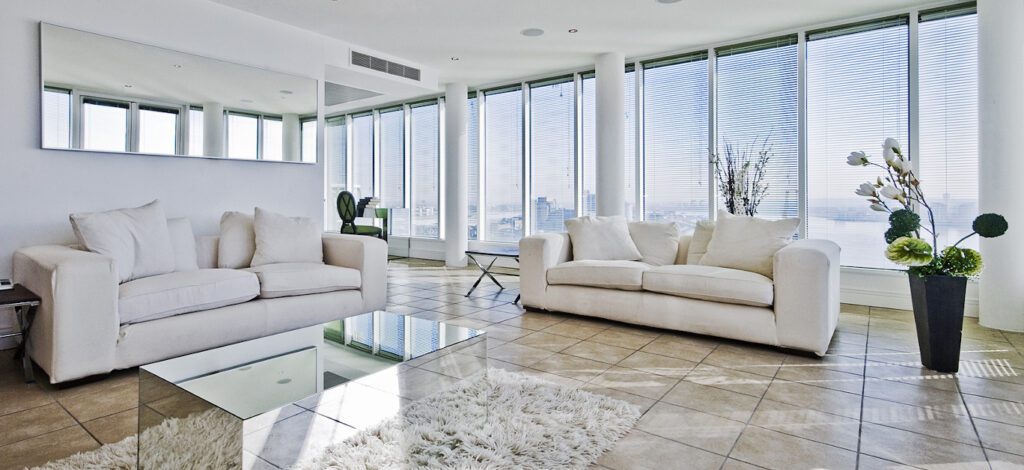
The Complete Guide To Indoor Blinds
Introduction:
Indoor blinds are an excellent way to enhance the interior decor of any home or office. With a wide range of styles, colours, and materials, you can choose the perfect blinds to complement your decor and provide privacy, light control, and energy efficiency.
However, with so many options available, it can be challenging to choose the right blinds for your space. That’s why we’ve created this complete guide to indoor blinds, covering everything from types and materials to installation and maintenance.
In this guide, we’ll answer some common questions about indoor blinds, including:
- What types of indoor blinds are available?
- What materials are indoor blinds made from?
- How do you measure indoor blinds?
- How do you install indoor blinds?
- How do you clean and maintain indoor blinds?
- By the end of this guide, you’ll have all the information you need to choose and install the perfect indoor blinds for your home or office.
Types of Indoor Blinds:
There are several types of indoor blinds to choose from, each with its unique style and features. Here are some of the most popular types of indoor blinds:
Roller Blinds:
Roller blinds are a popular choice for their simple and sleek design. They are made of a single piece of fabric that rolls up and down, making them easy to operate. Roller blinds are available in various materials, including sunscreen, light filtering, and block-out fabrics, providing different levels of light control and privacy.
Roman Blinds:
Roman blinds are made of fabric that folds neatly as they are raised. They come in a range of colours and patterns, making them an excellent choice for adding texture and visual interest to a room.
Venetian Blinds:
Venetian blinds consist of horizontal slats that can be tilted to control the amount of light and privacy. They are available in various materials, including timber, PVC, and aluminium, and come in a range of colours and finishes.
Vertical Blinds:
Vertical blinds consist of vertical slats that can be tilted to control the amount of light and privacy. They are available in various materials, including fabric, PVC, and aluminium, and come in a range of colours and patterns.
Panel Glides:
Panel glides are made of large fabric panels that glide across a track, making them easy to operate. They are available in various materials, including sunscreen, light filtering, and block-out fabrics, providing different levels of light control and privacy.
Materials Used for Indoor Blinds:
Indoor blinds are made from various materials, each with its unique features and benefits. Here are some of the most common materials used for indoor blinds:
Fabric:
Fabric is a popular material for indoor blinds, providing a soft and elegant look. Fabric blinds are available in various colours, patterns, and textures, making them an excellent choice for adding visual interest to a room.
PVC:
PVC is a durable and easy-to-clean material that is ideal for kitchens, bathrooms, and other high-moisture areas. PVC blinds are available in various colours and finishes, providing a sleek and modern look.
Aluminium:
Aluminum is a lightweight and durable material that is ideal for large windows and sliding doors. Aluminium blinds are available in various colours and finishes, providing a sleek and modern look.
Measuring for Indoor Blinds:
Measuring indoor blinds is an essential step in the installation process. Here are the steps to follow when measuring indoor blinds:
Measure the Width:
Measure the width of the window or door frame from left to right. Make sure to measure in three places – the top, middle, and bottom of the frame. Write down the smallest measurement as your width.
Measure the Height:
Measure the height of the window or door frame from top to bottom. Again, measure in three places – the left, middle, and right of the frame. Write down the smallest measurement as your height.
Check for Obstructions:
Before ordering your blinds, make sure to check for any obstructions such as handles, locks, or moulding that may interfere with the operation of the blinds. If you have any obstructions, make sure to take measurements that take them into account.
Choose Inside or Outside Mount:
Decide whether you want to mount your blinds inside the frame or outside the frame. If you choose an inside mount, make sure to subtract 1/4 inch from your width measurement to ensure a proper fit. If you choose an outside mount, make sure to add 1-1/2 inches to your width measurement to ensure adequate coverage.
Installation of Indoor Blinds:
Once you have measured your windows and ordered your blinds, it’s time to install them. Here are the steps to follow when installing indoor blinds:
Gather Tools and Supplies:
You will need a drill, screws, a level, and a measuring tape to install your indoor blinds. Make sure to have these tools on hand before you begin.
Install Brackets:
Position the brackets where you want to install the blinds. Use a level to make sure the brackets are straight. Mark the location of the screw holes with a pencil, and then drill pilot holes. Screw the brackets into place.
Attach Blinds:
Attach the blinds to the brackets by sliding the headrail into the bracket clips. Make sure to follow the manufacturer’s instructions for attaching the blinds to the brackets.
Test the Operation:
Test the operation of the blinds by pulling the cord or wand to raise and lower the blinds. Make any necessary adjustments to ensure that the blinds operate smoothly.
Cleaning and Maintenance of Indoor Blinds:
To keep your indoor blinds looking their best, it’s essential to clean and maintain them regularly. Here are some tips for cleaning and maintaining indoor blinds:
Dusting:
Dust your blinds regularly with a soft cloth or a feather duster to remove any dust or debris.
Vacuuming:
Use a brush attachment on your vacuum to remove any dust or debris that has accumulated on your blinds.
Spot Cleaning:
Use a mild detergent and a soft cloth to spot clean any stains or marks on your blinds.
Avoid Water:
Avoid getting your blinds wet, as moisture can damage some materials, such as fabric.
FAQs:
How long does it take to install indoor blinds?
The installation time for indoor blinds varies depending on the size and complexity of the job. However, most installations can be completed in a few hours.
Can I install indoor blinds myself?
Yes, indoor blinds can be installed by a DIYer with some basic tools and knowledge.
How often should I clean my indoor blinds?
It’s recommended to clean your indoor blinds at least once every six months, or more frequently if they are located in a high-traffic area.
Conclusion:
Indoor blinds are a great way to enhance the interior decor of any home or office. With a wide range of styles, colours, and materials
